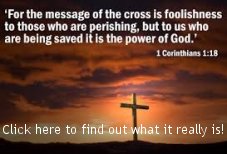Swedish Bishop Welcomes Muslim Call to Prayer as “Good” For Society
Jihad Watch – Bishop Fredrik Modéus writes on Facebook that it is “natural” that “different traditions and religions are heard” and that he “hopes to hear both church bells and prayer calls in our city.”
And maybe he will, for awhile. But once the Muslims of whom he is so solicitous are in charge, he won’t be hearing the church bells anymore. In Islamic law: dhimmis are “forbidden to openly display wine or pork…to ring church bells or display crosses…recite the Torah or Evangel aloud, or make public display of their funerals and feastdays” (Reliance of the Traveller, o11.5(6)).

“The bishop of Växjö welcomes Muslim prayer call,” translated from “Biskopen i Växjö stift välkomnar muslimska böneutrop,” Samhällsnytt, February 13, 2018 (thanks to Denny):
The Växjö Muslim Foundation has submitted an application for the call to prayer. The motive should be that Muslims should “feel at home” and “be proud of their culture.” Now the bishop of the area has declared his support for the claim.
It is in the immigrant district of Araby in Växjö that the prayer call will be made, if the Muslim foundation gets its way, as Samhällsnytt has previously written.
Now the bishop of the area has declared his support for the demands of the Muslim organization. On Facebook, he writes about the proposal, saying that it is “natural” that “different traditions and religions are heard” and that he “hopes to hear both church bells and prayer calls in our city.”
Source: Jihad Watch
The Church of Sweden is the Lutheran Church
You can put lipstick and a dress on a pig and try to pass it off as a woman, but it is STILL a PIG! What do Lutheran’s believe and what is their doctrine based on? Why Roman Catholicism!
Audio Player
Martin Luther was born and raised in Germany and studied philosophy and law as a young man, but soon became discouraged by those studies. He became an Augustinian Monk in 1505, but the isolated lifestyle only led him to further despair as he spent countless hours in meditation and contemplation. In 1507, he was ordained a Roman Catholic priest and later began teaching theology at the University of Wittenberg. During his years teaching theology, Luther grew increasingly frustrated at the excesses and abuses which he saw within the leadership of the Roman Catholic Church. On October 31, 1517, he posted his 95 Theses on the door of All Saint’s Church in Wittenberg, which was the accepted practice for anyone at the university who wanted to engage in theological debate. The majority of Luther’s theses addressed the lack of biblical knowledge, practice, and accountability among the leaders of the church, and were intended to point them back to Scripture. Martin Luther was not the first to address these issues; in fact, most of them had been pointed out by other men within the Roman Catholic Church for nearly 100 years. Despite the steady stream of critics, the Catholic Church refused to admit error or make any substantial changes.
As with the other Reformers, who were all born, baptized, confirmed and educated in the Roman Catholic Church, Luther had no intention of starting a new church, but only wanted to correct what he saw as violations of clear biblical teaching. Part of the problem was a widespread ignorance of the Bible, even among ordained priests. Carlstadt, an older peer of Luther, admitted that he was made a Doctor of Divinity before he had even seen a complete copy of the Bible. One of the driving factors in Luther’s work was the desire to have clear teaching for the common questions of the people, such as, “What must a man do to be saved?” and “How shall a sinner be justified before God and attain peace for his troubled conscience?” After a series of meetings in which Luther refused to recant his views, Pope Leo X excommunicated Martin Luther in 1521. Many of the common people and German nobility followed Luther’s teaching, and the Lutheran Church began to be organized as a separate body in 1525. In recent years, most Lutheran bodies have made efforts to mend the breach with the Roman Catholic Church.
In 1530, the German lords were requested by the Pope to give an accounting of their beliefs (as well as reconfirm their fidelity to the Holy Roman Empire), and they gave their reply in the Augsburg Confessions. This was the first detailed confession of faith by German Lutherans, and it is still the primary document used by Lutherans to describe and guide their faith. In 1580, the Book of Concord combined 10 documents which were considered authoritative for guiding the Lutheran faith. That book is still used today, but has a different degree of authority within the various Lutheran bodies.
1st Corinthians 16:22 “If any man love not the Lord Jesus Christ, let him be Anathema Maranatha.”
Anathema - a person or thing accursed or consigned to damnation or destruction. Maranatha - the Lord is coming” or “come, O Lord.
Many of the ceremonies and liturgies of the Catholic Church have been carried over into the Lutheran Church, with modifications to reflect their distinct doctrines. Some of the differences between the ELCA and LCMS stem from their divergent views on the Bible. While the LCMS affirms that the Bible is infallible in all areas (Psalm 19:7; 2 Timothy 3:16), the ELCA states that it is possible for the Bible to be in error concerning some areas, like science or history. In general, all Lutheran churches teach salvation by grace alone, through faith alone, but the manner in which that faith is lived out can vary from an empty participation in ceremonies to a very personal relationship with God. Source: Got Questions






